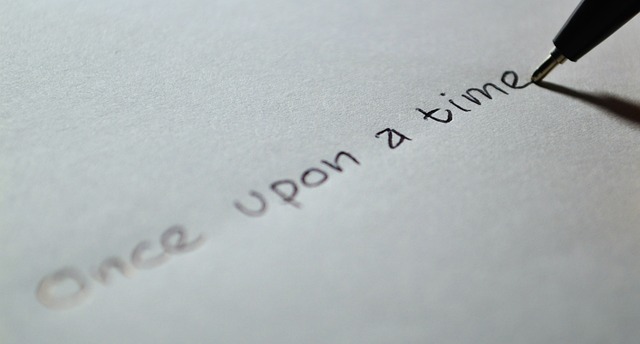The ability of storytelling to transport readers to new worlds, evoke powerful emotions, and leave a lasting impact is clearly understood by fiction writers.
Yet, crafting a compelling narrative is easier said than done. To be successful, you’ll need to build a solid toolkit of narrative styles, techniques, and devices that you can call on when needed to bring your stories to life.
In this article, we’ll explore the world of narrative writing and provide you with a comprehensive guide to mastering this essential craft, plus some useful tips at the end.
So grab your laptop, settle in, and get ready to take your narrative writing to new heights!
The 9 Types of Narrative Writing
When it comes to telling a story, there are many different approaches you could take in your narrative, depending on the nature of your project.
Below I’ve selected the nine narrative writing types that are most commonly used by fiction authors:
1. Linear Narrative
This is the most commonly used type of narrative writing by a long shot, because it’s the easier one to write. In this type, the story is told in chronological order from beginning to end.
This is the most widely used structure in novels, short stories, and memoirs. By following a linear structure, you can not only build suspense in a logical way but also allow your readers to experience the story in a time format they can easily relate to in their lives.
2. Nonlinear Narrative
This type of narrative writing is the exact opposite of Linear Narrative, where you now get to present your story out of order.
Why turn a linear narrative on its head? You can do this to create tension and interest in your plot, as it presents your reader with the additional challenge of having to piece together the story as it unfolds.
Movies like “Pulp Fiction” and books like “The Time Traveler’s Wife” by Audrey Niffenegger use nonlinear narrative to great effect.
3. Reverse-Chronological Narrative
This is a variation of the Nonlinear Narrative. Here, the story starts at the end and progresses backward in time. Although things are technically still presented in order (but backwards!) it feels challenging because this is not the way time progresses in real life.
This type of narrative writing is often used to reveal the motivations and intentions of the characters in the story first. The movie “Memento” is a great example of this type of narrative.
4. Descriptive Narrative
This is a type of narrative writing that focuses on creating vivid and detailed descriptions of characters, settings, and events.
It’s often used in poetry and literary fiction. This type of writing helps your readers visualize and connect with your characters and your story.
5. Viewpoint Narrative
In this type of narrative writing, the story is told from the perspective of a particular character or characters as they take on the role of narrator.
This allows your readers to experience your work of fiction through your character’s thoughts and emotions, creating a more intimate connection with your story.
Examples of viewpoint narrative include “The Catcher in the Rye” by J.D. Salinger and “Gone Girl” by Gillian Flynn.
6. Historical Narrative
This type of narrative writing is used to tell stories about historical events or figures. These stories could either be fictionalized or based on true events.
Historical narrative is often used to educate readers about important moments in history or to shed light on the lives of historical figures.
Examples of historical narrative include “Schindler’s List” by Thomas Keneally and “Alexander Hamilton” by Ron Chernow.
7. Framing Story Narrative
Framing story involves writing a story within a story. In this type of narrative, a character or narrator tells a story to another character. This can be used to provide context or to add depth to the main story.
A classic example of framing story narrative is “The Canterbury Tales” by Geoffrey Chaucer, where characters take turns telling each other stories in order to pass the time as they travel between London to Canterbury.
8. Quest Narrative
This type of narrative is used when a story involves a character or a group of characters on a journey or quest. The journey can be physical, emotional, or both. Quest narrative is often used to explore themes of self-discovery, growth, and transformation.
Classic examples of quest narrative include “The Odyssey” by Homer and “The Lord of the Rings” trilogy by J. R. R. Tolkien.
9. Stream of Consciousness Narrative
Stream of consciousness narrative mimics the flow of a character’s thoughts and feelings. The goal in this style is to replicate the disjointed and random nature of the human mind in written form.
Examples of stream of consciousness narrative include “Ulysses” by James Joyce and “To the Lighthouse” by Virginia Woolf.
Narrative Writing Tips
To round up the article, here are some quick tips that complement the above types of narrative writing, to help you build a solid storytelling foundation:
Develop Strong Characters
Characters are the heart of your story, so take the time to develop them fully, giving them distinct personalities and backstories.
Create a Clear and Engaging Plot
Your plot should be well-defined, with a clear beginning, middle, and end. Use conflict and tension to keep your readers engaged at all times.
Use Dialogue Effectively
Dialogue can bring your characters to life and make your story more engaging. Use dialogue to reveal information about your characters, advance the plot, and build tension.
Be sure to use dialogue tags and action beats to help your readers keep track of who is speaking and what they’re doing.
Show, Don’t Tell
“Show, don’t tell” is the quintessential piece of writing advice. Instead of telling your readers what your characters are feeling or thinking, show it through their actions and dialogue.
This will create a more immersive reading experience and allow your readers to draw their own conclusions about your characters and their motivations.
Use Sensory Details
Sensory details can help your readers fully immerse themselves in your story. Use descriptions of smells, sounds, textures, and tastes to create a vivid and memorable world. These details will help set the mood and tone of your story.
Revise and Edit
No first draft is perfect and that’s okay. Revision and editing are crucial parts of the writing process. Once you’ve finished your narrative, put it aside overnight and then come back to it the next day with fresh eyes.
Look for areas where you can tighten up your writing, eliminate unnecessary details, and improve your pacing. Don’t be afraid to cut or rewrite parts of your story if they aren’t working.
Final Thoughts
By now, you should have a better understanding of the different narrative types and techniques that can help you create stories that can captivate your readers.
Having said that, good writing is not just about following set rules and structures, but also about being creative, authentic, and passionate in your craft.
So, whether you’re writing a novel, a short story, or a memoir, make sure to infuse your own unique voice and style into your work.
Good luck!
Harry Wallett is the Founder and Managing Director of Relay Publishing. Combining his entrepreneurial background with a love of great stories, Harry founded Relay in 2013 as a fresh way to create books and for writers to earn a living from their work. Since then, Relay has sold 3+ million copies and worked with 100s of writers on bestselling titles such as Defending Innocence, The Alveria Dragon Akademy Series and Rancher’s Family Christmas. Harry oversees the creative direction of the company, and works to develop a supportive collaborative environment for the Relay team to thrive within in order to fulfill our mission to create unputdownable books.
Relay Publishing Wants You
If you think you have what it takes to become a brilliant writer, editor, or storyliner, Relay Publishing has a range of exciting opportunities.
Find out more about us, and get in touch. We can’t wait to hear from you!




